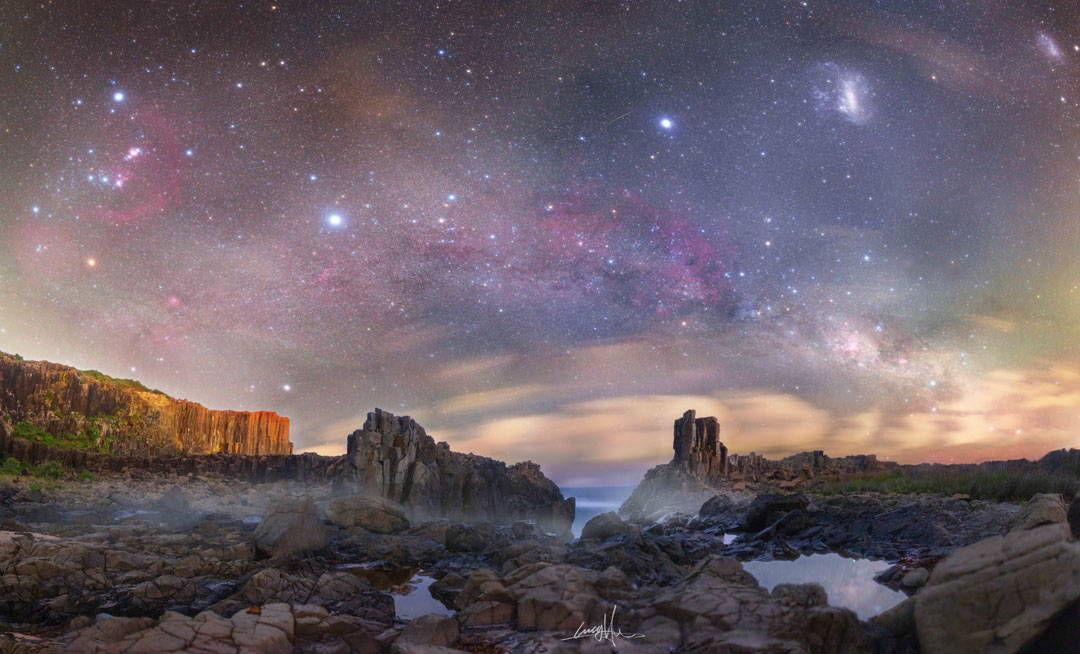2022年1月18日
From Orion to the Southern Cross
Image Credit & Copyright: Lucy Yunxi Hu
Explanation: This is a sky filled with glowing icons. On the far left is the familiar constellation of Orion, divided by its iconic three-aligned belt stars and featuring the famous Orion Nebula, both partly encircled by Barnard’s Loop. Just left of center in the featured image is the brightest star in the night: Sirius. Arching across the image center is the central band of our Milky Way Galaxy. On the far right, near the top, are the two brightest satellite galaxies of the Milky Way: the Large Magellanic Cloud (LMC), and the Small Magellanic Cloud (SMC). Also on the far right — just above the cloudy horizon — is the constellation of Crux, complete with the four stars that make the iconic Southern Cross. The featured image is a composite of 18 consecutive exposures taken by the same camera and from the same location in eastern Australia during the last days of last year. In the foreground, picturesque basalt columns of the Bombo Quarry part to reveal the vast Pacific Ocean.
Tomorrow’s picture: big galaxy approaches
从猎户座到南十字
影像提供与版权: Lucy Yunxi Hu
说明: 这片星空到处都是明亮的标志性天体。在这张主题影像里,左缘附近有熟悉的猎户座,横亘在腰部排列成行的腰带三星为其标志天体,其内更有著名的猎户大星云,而二者皆在巴纳德环之内。贴在影像中心左侧的天体,为地球夜空最明亮的天狼星。横贯过影像中心的拱弧,则是我们银河系的中央盘面。影像右上角有银河系最明亮的伴星系:大麦哲伦星系(LMC)及小麦哲伦星系(SMC)。此外,在影像右缘地平线的云层上方,还可见到拥有由4颗恒星组成的南十字标志之南十字座。这幅主题影像,组合自同一部相机在澳洲相同地点于去年最后数天拍摄的18张照片。前景是邦博岬采石场,从其美丽的花岗岩柱之缝隙里,可以一窥浩瀚的太平洋。
明日的图片: big galaxy approaches







